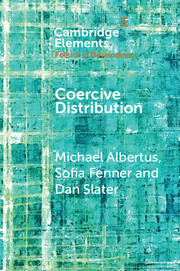Element contents
Coercive Distribution
Published online by Cambridge University Press: 24 May 2018
Summary
- Type
- Element
- Information
- Online ISBN: 9781108644334Publisher: Cambridge University PressPrint publication: 25 April 2018
References
- 29
- Cited by

